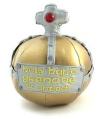If you’re reading this you’re either a craft beer fan, a friend forced to visit the blog under penalty of fatwa or you landed here after misspelling the topic you intended to search on Google (understandable given the fact they cram so many keys on these keyboards). If you’re here by accident please don’t leave – you’ll probably add more more to the conversation than everyone else (and if you do leave I’ll add you to the fatwa list). Those of you who are craft beer fans have plenty of other interests too. I’m also a big college basketball fan. Big East born (sort of) and bred. My freshman year at Syracuse was also the inaugural year of the Big East Basketball Conference. So I’m watching ESPN last Fall and see that the Big East is welcoming a few new schools including San Diego State and Boise State. Wait…what?
Last time I checked San Diego was in California and Boise was in Idaho and neither of them are east of much of anything. Despite the geographic anomaly, those schools are moving east. They’re not the only things moving east. Over the past year, no less than five craft brewers have announced plans to build or have already begun building breweries far from their western homes. Most in the craft beer community welcome the expansion. I’m not so sure I’m on board. Not yet anyway.
That’s a picture of the mythical green flash and I spent many a sunset on various Southern California beaches in San Diego, Malibu and points in between hoping to catch a glimpse of the elusive phenomenon. I don’t know if I ever saw it. If I did, I’m sure Will Smith walked up soon after and slipped on those sunglasses. In any event, when I think of Green Flash I think of the green flash and that takes me back to California (yes, the Eagles were right. I checked out many years ago but I still haven’t left). So my perspective on the eastern migration of west coast craft brewers is greatly influenced by my years out there. In that respect, my opinions may be very different than most.
As of last count, three California craft brewers are opening new eastern breweries and two Colorado brewers are doing the same. Specifically:
- Green Flash (San Diego) to Asheville, NC
- Sierra Nevada (Chico) to Asheville, NC
- Lagunitas (Petaluma) to Chicago
- New Belgium (Ft. Collins) to Asheville, NC
- Oscar Blues (Lyons) to Asheville, NC
Granted, there are plenty of great reasons for these guys to open major brewing operations in the Southeast. Asheville is a worthy craft beer destinations these days. I get it. The economics just make too much sense. Green Flash and the rest of the reverse geographic pioneers almost have to have a presence out here if they want to increase market share and production while greatly reducing distribution costs and all the logistical nightmares that come with trying to get fresh craft beer onto shelves 3000+ miles away. Distribution up and down the eastern seaboard out of NC is certainly more advantageous than doing it from San Diego.
Craft beer fans (myself included) will have plenty to raise a glass to once the fermenters and bright tanks are up and running in the shadow of the Biltmore Estate:
- Availability – No more empty shelves in Philly. When Lagunitas sucks we’ll all get plenty to cheer about.
- Variety – California (or Colorado) only limited brews may see the light of an Atlantic sunrise.
- Freshness – There will always be challenges (individual retailers won’t be off the hook) but it stands to reason that it will be much easier to keep fresh brews on the shelves when it’s brewed closer to home.
All great reasons to applaud and look forward to the days when the new breweries are up and running but I’m only clapping with one hand. For me there will be something missing. Authenticity. When I pour a Green Flash West Coast IPA I want it be just that – a legitimate west coast IPA from the the real San Diego. I’m sure they’re going to do it right. The brews coming out of NC will probably be indistinguishable from the ones brewed in CA. That said, it’ll just feel a bit like I’m buying a label – buying a brand. That’s not a good thing IMO. That’s not why I check out from the craft beer shop any time I want and leave with California in the 4 pack.











